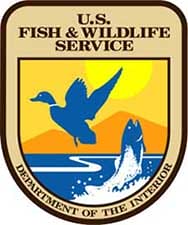

Washington, DC -(AmmoLand.com)- The U.S. Fish and Wildlife Service (Service) today released the Candidate Notice of Review, a yearly status appraisal of plants and animals that are candidates for Endangered Species Act (ESA) protection.
Two species were removed from the list, and two changed in priority from the last review, conducted in December 2014. There are now 60 species recognized by the Service as candidates for ESA protection. All candidate species are assigned a listing priority number based on the magnitude and imminence of the threats they face. When adding species to the list of threatened or endangered species, the Service first addresses species with the highest listing priority. Today’s notice announces changes in priority for two species.
The priority for Hirst Brothers’ panic grass was increased based on a re-evaluation of the imminence of the threat due to an increase in regional precipitation patterns that are causing long-term flooding in the species’ coastal plain pond habitat. The priority for whitebark pine was lowered based on the reduced magnitude of the threat from mountain pine beetle; the beetle epidemic appears to be subsiding, and the Service no longer considers this threat to be having the high level of impact that was seen in recent years.
The removal of two species announced today – both anchialine pool shrimp originally thought to be endemic to Hawaii – is based on new information showing they occur on other islands, largely exist in protected areas where known to occur and may use broader habitats than originally reported.
The Service is soliciting additional information on the candidate species and others that may warrant ESA protection to assist in preparing listing documents and future revisions or supplements to the Candidate Notice of Review.
Candidate species are plants and animals for which the Service has enough information on the status and threats to propose them as threatened or endangered but for which a proposed listing rule is precluded by other, higher priority listing actions. The annual review and identification of candidate species helps landowners and natural resource managers understand which species need most to be conserved, allowing them to address threats and work to preclude ESA listing.
Although candidate species do not receive ESA protection, the Service works to conserve them and their habitats using several tools: a grants program funds conservation projects by private landowners, states and territories; and two voluntary programs – Candidate Conservation Agreements (CCAs) and Candidate Conservation Agreements with Assurances (CCAAs) – engage participants to implement specific actions that remove or reduce the threats to candidate species that help stabilize or restore the species and can preclude ESA listing.
The complete notice and list of proposed and candidate species will publish in the Federal Register on December 24, 2015. For more information, visit: http://www.fws.gov/endangered/
About the U.S. Fish and Wildlife Service:
The mission of the U.S. Fish and Wildlife Service is working with others to conserve, protect, and enhance fish, wildlife, plants, and their habitats for the continuing benefit of the American people. We are both a leader and trusted partner in fish and wildlife conservation, known for our scientific excellence, stewardship of lands and natural resources, dedicated professionals, and commitment to public service. Connect with our Facebook page, follow our tweets, watch our YouTube Channel and download photos from our Flickr page.
For more information on our work and the people who make it happen, visit www.fws.gov.
